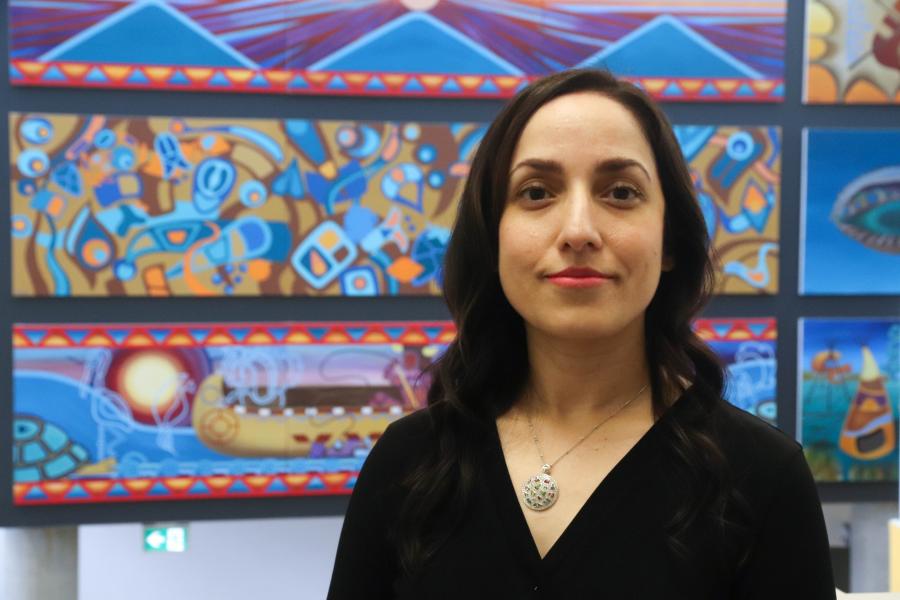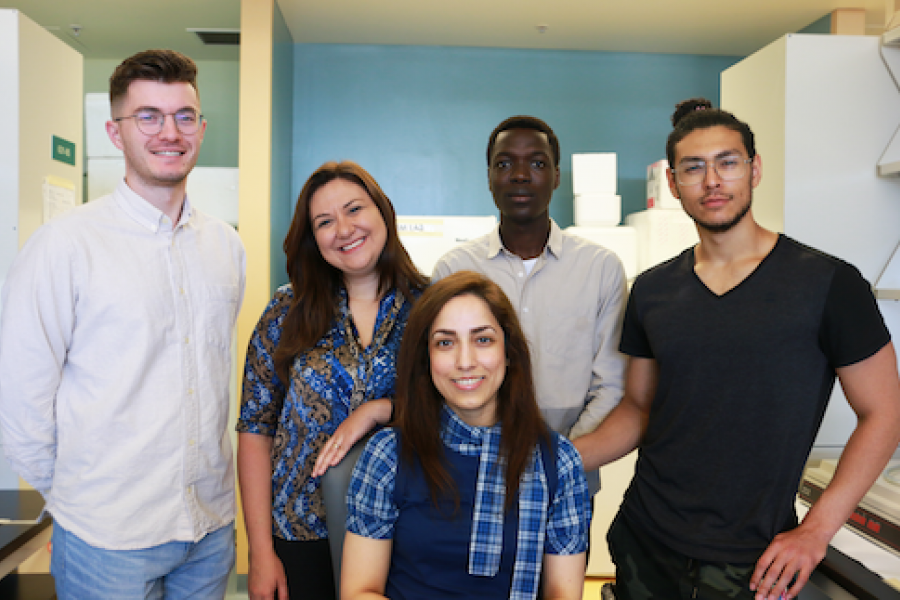Associate Professor
120 Frank Kennedy Centre
204-474-7617
ayesha.saleem@umanitoba.ca
Twitter: @asaleem_
ResearchGate
The University of Manitoba campuses are located on original lands of Anishinaabeg, Ininew, Anisininew, Dakota and Dene peoples, and on the National Homeland of the Red River Métis. More
University of Manitoba
Winnipeg, Manitoba Canada, R3T 2N2

Associate Professor
120 Frank Kennedy Centre
204-474-7617
ayesha.saleem@umanitoba.ca
Twitter: @asaleem_
ResearchGate
Dr. Saleem Dr. Saleem is an Assistant Professor in the Faculty of Kinesiology and Recreation Management at the University of Manitoba, and a Principal Investigator at the Children’s Hospital Research Institute of Manitoba (CHRIM). She has expertise in molecular and cellular physiology, specializing in mitochondrial metabolism and extracellular vesicle biology. Furthermore, she is passionate about the therapeutic potential of pro-metabolic signaling factors mediated by endurance exercise to promote healthy aging, and attenuate chronic pathological conditions such as diet-induced obesity, type 2 diabetes, and cancer. Dr. Saleem currently holds operating grants from SSHRC New Frontiers in Research Fund, Research Manitoba, University of Manitoba and CHRIM.
The Extracellular Vesicles and Exercise lab is dedicated to delineating the underlying molecular mechanisms of cellular cross talk as mediated by extracellular vesicles. The main focus of our research program is to decipher the extracellular signalling facilitated through extracellular vesicles (EVs), the primary method of cellular communication.

Saleem A, Bourgeois JM, Khan MI, Safdar A, Azzopardi P, Rusiecki D, and Tarnopolsky MA. Exosome-mRNA therapy restores dystrophin expression and improves muscle function in mdx mice. Nature. Manuscript in revision. Manuscript ID: 2016-07-09752.
Nazli A*, Safdar A*, Saleem A, Akhtar M, Brady LI, Schwartzentruber J, FORGE Canada Consortium, and Tarnopolsky MA. A mutation in the TMEM65 gene results in mitochondrial myopathy with severe neurological manifestations. Eur J Hum Genet. 2017 Jun;25(6):744-751. *co-first authors.
Safdar A, Saleem A, and Tarnopolsky MA. The potential for endurance exercise-derived exosomes to treat metabolic diseases – Good things come in small packages. Nat Rev Endocrinol. 2016 Sep;12(9):504-17.
Clark-Matott J, Saleem A, Dai Y, Ma X, Safdar A, Tarnopolsky MA and Simon DK. Metabolomic analysis of exercise effects in the PolG mtDNA mutator mouse brain. Neurobiol Aging. 2015 Nov;36(11):2972-2983.
Saleem A, Safdar A, Kitaoka Y, Ma X, Marquez OS, Akhtar M, Suri R, Nazli A, Turnbull J and Tarnopolsky MA. Polymerase gamma mutator mice rely on increased glycolytic flux for energy production. Mitochondrion 2015 Mar;21:19-26.
Saleem A, Iqbal S, Zhang Y and Hood DA. Effect of p53 on mitochondrial morphology, mitophagy and assembly in skeletal muscle. Am J Physiol Cell Physiol. 2015 Feb 15;308(4):C319-29.
Saleem A, Carter HN, and Hood DA. p53 is necessary for the adaptive changes in the cellular milieu subsequent to an acute bout of endurance exercise. Am J Physiol Cell Physiol. 2014 Feb 1;306(3):C241-9.
Saleem A, and Hood DA. Exercise induces p53 translocation to the mitochondria and promotes p53-Tfam-mtDNA complex formation. J Physiol, 2013 Jul 15;591(Pt 14):3625-36.
Menzies KJ, Singh K, Saleem A, and Hood DA. Sirtuin 1-mediated effects of exercise and resveratrol on mitochondrial biogenesis. J Biol Chem. 2013 Mar 8;288(10):6968-79.
Saleem A, Carter HN, Iqbal S and Hood DA. Role of p53 Within the Regulatory Network Controlling Muscle Mitochondrial Biogenesis. Exerc Sport Sci Rev. 2011 Oct;39(4):199-205.
Saleem A, Adhihetty PJ, Hood DA. Role of p53 in mitochondrial biogenesis and apoptosis in skeletal muscle. Physiol Genomics. 2009 Mar 3;37(1):58-66.